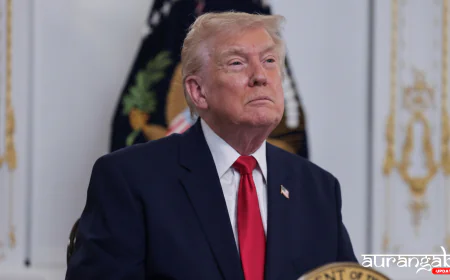EU Sanctions on Rosneft's India Refinery & Lowered Oil Cap: India's Crude Advantage
The EU's latest sanctions targeting Rosneft's Indian refinery (Nayara Energy) and lowering the price cap on Russian crude to $50/barrel could offer India deeper discounts on oil imports, bolstering its energy security despite complex geopolitical challenges.

NEW DELHI: In a significant development reverberating through global energy markets, the European Union (EU) has taken fresh aim at Russia's oil revenues by imposing new sanctions on Nayara Energy, an Indian joint venture refinery in which Russian oil giant Rosneft holds a substantial stake. Concurrently, the EU, in coordination with the G7 nations and Australia, has further tightened the screws by lowering the existing price cap on seaborne Russian crude oil from $60 to $50 per barrel. These twin moves, part of the EU's comprehensive 14th package of sanctions against Russia, are designed to further cripple Moscow's ability to fund its ongoing conflict in Ukraine. However, analysts suggest these restrictions could inadvertently present a lucrative opportunity for India, enabling it to secure even deeper discounts on its burgeoning Russian crude imports.
This intricate dance of geopolitics and energy economics places India, one of the world's largest and fastest-growing energy consumers, in a unique position. India has consistently prioritized its national energy security, emerging as a dominant buyer of Russian crude since the imposition of Western sanctions on Moscow. The new EU measures introduce both complexities and potential economic advantages for the South Asian giant.
EU's Broadened Sanctions and The Rationale
The EU's latest restrictive measures are multi-pronged. The direct targeting of Nayara Energy, which operates India's second-largest private oil refinery in Vadinar, Gujarat, is particularly noteworthy. Rosneft holds a 49.13% stake in Nayara Energy, making it a key asset for the Russian energy behemoth. The EU's intention behind this designation is explicit: to prevent Rosneft from exploiting Nayara Energy as a conduit to circumvent the existing sanctions regime on Russian oil and its associated revenues.
These sanctions on Nayara Energy primarily focus on restricting the flow of specific technologies, financial transactions, and specialized services that could directly benefit Rosneft's operations through its Indian arm. The aim is to make it more difficult and costly for Rosneft to process or trade Russian crude via this route, thereby reducing its overall operational flexibility and profitability.
Simultaneously, the decision to lower the price cap on seaborne Russian crude from $60 to $50 per barrel represents a direct assault on Russia's export earnings. This price cap mechanism, initially implemented in December 2022 by the G7, EU, and Australia, prohibits Western companies from providing shipping, insurance, and financing services for Russian oil sold above the set limit. By lowering the cap, the coalition seeks to intensify financial pressure on Moscow, forcing it to sell its oil at even greater discounts to non-Western buyers or face severe logistical hurdles in transporting its crude.
The underlying rationale for these aggressive measures, as articulated by the EU, is to systematically degrade Russia's military capabilities by constricting its primary source of income. They are part of a broader strategy to isolate Russia economically and politically on the global stage.
The India Advantage: Deeper Discounts and Energy Security
For India, a net importer of crude oil, the lowered price cap on Russian crude presents a compelling economic proposition. India has shrewdly navigated the complex geopolitical landscape since the Ukraine conflict, significantly increasing its purchases of discounted Russian oil. Prior to 2022, Russia constituted less than 1% of India's total crude imports. However, in recent months, this share has dramatically surged to over 40%, transforming Russia into India's largest crude supplier.
A $50 per barrel price cap effectively means that Russian crude, already available at a discount due to Western restrictions, could become even cheaper for Indian refiners. This translates directly into a reduced crude import bill for India, which is a massive economic boon. A lower import bill not only saves precious foreign exchange but also plays a crucial role in managing domestic inflation, particularly given the direct link between global crude prices and local fuel costs. India's government has consistently maintained that its crude oil procurement decisions are driven purely by national interests, with the paramount objective of ensuring affordable and stable energy supplies for its vast population.
Furthermore, the sanctions on Nayara Energy, while directly targeting Rosneft's influence, might indirectly benefit other Indian refiners. If Nayara Energy faces operational constraints or reduced access to certain technologies/services due to the sanctions, it might lead to a greater supply of discounted Russian crude being available for direct purchase by other Indian public or private sector refiners. This could further intensify competition among sellers and push prices down, offering an additional layer of advantage to India.
Navigating Complexities: Challenges and Geopolitical Nuances
While the economic benefits appear significant, India's increased reliance on Russian oil and its interactions within the evolving sanctions framework come with their own set of challenges and geopolitical nuances:
-
Navigating Sanction Regimes: India must meticulously navigate the intricate web of Western sanctions to avoid any perception of direct circumvention that could trigger secondary sanctions. While India has not violated any international laws by purchasing Russian oil, the constant evolution of sanction packages requires vigilant monitoring and adaptation by Indian refiners and financial institutions.
-
Payment Mechanisms: Ensuring smooth and uninterrupted payment mechanisms for large volumes of Russian crude outside traditional Western financial channels remains a challenge. India and Russia have been exploring alternative payment systems, including local currency settlements, but scaling these up for massive trade volumes is complex.
-
Impact on Nayara Energy: The direct sanctions on Nayara Energy could pose operational challenges for the refinery. Its ability to access Western technology, spare parts, or financial services might be hampered, potentially affecting its refining capacity or product quality. This could indirectly impact India's overall refining output, though the country's diverse refining landscape is generally robust.
-
Diplomatic Balancing Act: India must maintain a delicate diplomatic balance with its Western partners, particularly the United States and EU nations, who are critical of its continued large-scale imports of Russian oil. While India cites its sovereign right to ensure energy security, it also values its strategic partnerships with Western economies.
-
Supply Diversification: While Russian crude offers significant discounts, relying too heavily on a single source, even a discounted one, carries inherent supply chain risks. India's long-term energy strategy aims for diversified sourcing to build resilience against geopolitical shocks.
Impact on Global Oil Markets
The EU's decision to lower the price cap on Russian crude is part of a concerted effort to manipulate global oil supply dynamics in a way that minimizes revenue for Moscow while avoiding a global supply shock that could trigger a sharp rise in crude prices. By allowing Russian oil to continue flowing but at a lower price, the coalition aims to achieve its geopolitical objectives without inadvertently harming the global economy.
However, the effectiveness of the price cap mechanism remains a subject of debate among energy analysts. Russia has adapted by redirecting its exports to non-Western buyers and building its own shipping and insurance infrastructure. The lowered cap will test these alternative channels and could potentially force Russia to offer even more attractive terms to its remaining buyers, further reshaping global oil trade flows.











































